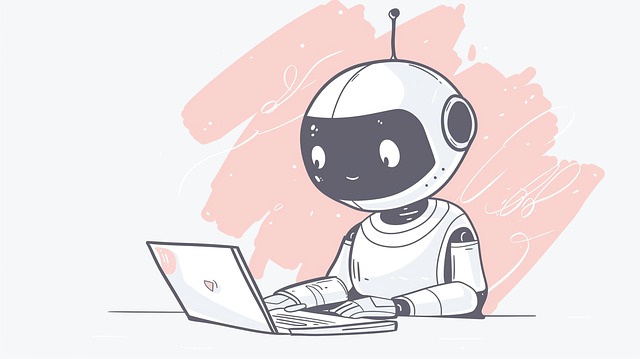Creating a chatbot using free AI chatbots platforms like oChatbot is accessible even for non-coders thanks to advanced NLP. For basic agents, drag-and-drop interfaces offer user-friendly chatbot development with limited customization. More sophisticated bots require coding skills and comprehensive development environments supporting NLP and ML. Designing contextually relevant responses and leveraging pre-built templates simplifies the process. oChatbot's integrated NLP capabilities enable natural conversations, setting your bot apart in a crowded market. Thorough testing and continuous improvement based on user feedback ensure your free AI chatbot remains valuable and engaging.
“Unleash the power of conversational AI with our comprehensive guide on how to build a chatbot. From understanding the basics to choosing the right platform, this article covers all you need to know to create an engaging oChatbot. Learn about designing intuitive conversational flows and leveraging AI for natural language processing (NLP). Discover best practices for testing, deploying, and continuously improving your free AI chatbot. By following these steps, you’ll be well on your way to developing a game-changing virtual assistant.”
- Understanding the Basics of Chatbot Development
- Choosing the Right Platform for Your OChatbot
- Designing Conversational Flows and Responses
- Integrating AI for Natural Language Processing (NLP)
- Testing, Deploying, and Continuously Improving Your Free AI Chatbot
Understanding the Basics of Chatbot Development

Building a chatbot can seem like an intimidating task, but with the right tools and understanding, it’s accessible to everyone. At its core, a chatbot is simply a computer program designed to simulate human conversation through text or voice interactions. The beauty of modern chatbot development lies in the availability of free AI chatbots that leverage advanced natural language processing (NLP) techniques. These platforms empower developers—even those without extensive coding experience—to create sophisticated oChatbots.
Understanding the fundamentals involves grasping concepts like user input handling, intent recognition (understanding user needs), and response generation. Most free AI chatbot builders offer intuitive interfaces where you define these components by providing examples of user inputs and their corresponding responses. By iteratively training your chatbot with diverse scenarios, you can enhance its ability to handle a wide range of user queries naturally and effectively.
Choosing the Right Platform for Your OChatbot

When building an OChatbot, selecting the appropriate platform is a pivotal step. The market offers a plethora of options, from specialized chatbot builders to robust AI development frameworks. Consider your project’s scope and complexity; for instance, free AI chatbots often come with limited customization but are ideal for basic conversational agents. These platforms provide intuitive drag-and-drop interfaces, making them accessible to non-programmers.
On the other hand, if you’re aiming for a sophisticated OChatbot with advanced features, consider more comprehensive development environments. These usually require coding skills but offer greater flexibility and control over your chatbot’s behavior and responses. Look for platforms that support natural language processing (NLP) and machine learning (ML) integrations, enabling your chatbot to understand and generate human-like text, a key aspect in creating engaging user interactions.
Designing Conversational Flows and Responses

Designing the conversational flow is a crucial step in building an engaging chatbot experience. This involves planning out the various user inputs and intended outputs, ensuring a natural and logical dialogue path. Start by identifying potential user queries and messages, then craft responses that are informative, relevant, and tailored to the context.
Utilize free AI chatbot tools and platforms that offer pre-built conversational templates and response generators. These can significantly streamline the process, especially for beginners. With oChatbot, for instance, you can easily create branching conversations, set up intent recognition, and define entity extraction, all without extensive coding. This allows for rapid prototyping and iterative improvements, ensuring your chatbot delivers on user expectations.
Integrating AI for Natural Language Processing (NLP)

To build a chatbot that can understand and respond to natural language inputs, integrating AI for Natural Language Processing (NLP) is essential. NLP allows your chatbot to interpret human language, enabling it to comprehend user queries and generate appropriate responses. By leveraging free AI chatbots and technologies like oChatbot, developers can access powerful NLP capabilities without the need for extensive coding or significant investment.
These tools often come with pre-trained models that can be fine-tuned for specific tasks or domains. This means you can quickly teach your chatbot to recognize user intents, extract relevant entities, and generate contextually appropriate responses. Additionally, integrating NLP enhances the overall user experience by making conversations more fluid and human-like, ensuring your chatbot stands out in a crowded market of free ai chatbots.
Testing, Deploying, and Continuously Improving Your Free AI Chatbot

After building your oChatbot, testing is crucial. This involves rigorous evaluation to ensure it responds accurately and appropriately to a wide range of user inputs. Use diverse test cases covering various scenarios, from common queries to edge cases, to identify any flaws or inconsistencies in its performance. Deploying your free AI chatbot is the next step where you make it accessible to users. Choose a reliable platform that supports integration with your desired channels, such as websites, messaging apps, or social media platforms. This seamless integration ensures your chatbot can engage users across multiple touchpoints.
Continuous improvement is key to maintaining and enhancing your oChatbot’s performance over time. Regularly collect user feedback and monitor interaction data to identify areas for optimization. Update and refine the chatbot’s knowledge base, improve response accuracy, and add new features based on user needs and trends in the conversational AI space. Keep refining until your free AI chatbot becomes a valuable, engaging, and reliable tool for its users.
Building a chatbot can be a rewarding endeavor, enabling businesses to offer seamless customer experiences. By understanding the fundamentals of chatbot development, selecting the appropriate platform like an OChatbot, designing intuitive conversational flows, integrating AI for natural language processing (NLP), and continuously refining through testing and deployment, you can create effective free AI chatbots that enhance user interactions and drive business success.
